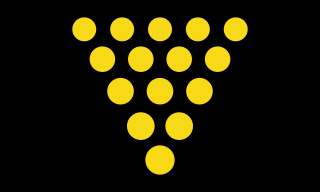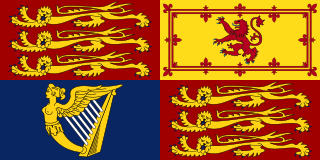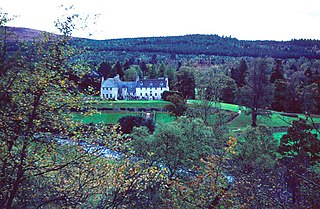
Prince of Wales was a title held by native Welsh princes before the 12th century; the term replaced the use of the word king. One of the last Welsh princes, Llywelyn ap Gruffudd, was killed at the Battle of Orewin Bridge in 1282. Edward I, King of England, invested his son Edward as the first English Prince of Wales in 1301.

The British royal family comprises Queen Elizabeth II and her close relations. There is no strict legal or formal definition of who is or is not a member of the British royal family.

Princess of Wales is a British courtesy title held by the wife of the Prince of Wales, who is, since the 14th century, the heir apparent of the English or British monarch. The first acknowledged title holder was Eleanor de Montfort, wife of Llywelyn ap Gruffudd. It has subsequently been used by wives of post-conquest princes of Wales.

Duke of Cornwall is a title in the Peerage of England, traditionally held by the eldest son of the reigning British monarch, previously the English monarch. The Duchy of Cornwall was the first duchy created in England and was established by a royal charter in 1337. The present duke is the Prince of Wales, the eldest son of Queen Elizabeth II. His current wife, Camilla, is the current Duchess of Cornwall.

Camilla, Duchess of Cornwall, is a member of the British royal family. She is the second wife of Charles, Prince of Wales, heir apparent to the British throne. Instead of using the title Princess of Wales, she uses the title Duchess of Cornwall, her husband's secondary designation. In Scotland, she is known as the Duchess of Rothesay.
A prince consort is the husband of a queen regnant who is not himself a king in his own right. In recognition of his status, a prince consort may be given a formal title, such as prince or prince consort, with prince being the most common. However, most monarchies do not have formal rules on the styling of princes consort, thus they may have no special title. Few monarchies use the title of king consort for the same role.

Duke of Rothesay is a dynastic title of the heir apparent to the British throne, currently Prince Charles. It was a title of the heir apparent to the throne of the Kingdom of Scotland before 1707, of the Kingdom of Great Britain from 1707 to 1801, and now of the United Kingdom of Great Britain and Northern Ireland. It is the title mandated for use by the heir apparent when in Scotland, in preference to the titles Duke of Cornwall and Prince of Wales, which are used in the rest of the United Kingdom and overseas. The Duke of Rothesay also holds other Scottish titles, including those of Earl of Carrick, Baron of Renfrew, Lord of the Isles, and Prince and Great Steward of Scotland. The title is named after Rothesay on the Isle of Bute, Argyll and Bute, but is not associated with any legal entity or landed property, unlike the Duchy of Cornwall.
The order of precedence in the United Kingdom is the sequential hierarchy for Peers of the Realm, officers of state, senior members of the clergy, holders of the various Orders of Chivalry and other persons in the three legal jurisdictions within the United Kingdom:

The title of Duke of Connaught and Strathearn was granted by Queen Victoria of the United Kingdom of Great Britain and Ireland to her third son, Prince Arthur, on 24 May 1874. At the same time, he was also granted the subsidiary title of Earl of Sussex.

The Royal Standards of the United Kingdom refers to either one of two similar flags used by Queen Elizabeth II in her capacity as Sovereign of the United Kingdom and its overseas territories. Two versions of the flag exist, one for general use in England, Northern Ireland, Wales and overseas; and the other for use in Scotland.
Duchess of Cornwall is a courtesy title held by the wife of the duke of Cornwall. The Dukedom of Cornwall is a non-hereditary peerage title held by the British monarch's eldest son and heir. The current duchess is Camilla, wife of Charles, Prince of Wales.
A substantive title is a title of nobility or royalty acquired either by individual grant or inheritance. It is to be distinguished from a title shared among cadets, borne as a courtesy title by a peer's relatives, or acquired through marriage.

Prince and Great Steward of Scotland are two of the titles of the heir apparent to the throne of the United Kingdom. The current holder of these titles is Prince Charles, who bears the other Scottish titles of Duke of Rothesay, Earl of Carrick, Lord of the Isles and Baron of Renfrew, and is known outside Scotland as the Prince of Wales.

Birkhall is a 53,000 acre (210 km²) estate on Royal Deeside, Aberdeenshire, Scotland. It is located alongside the River Muick to the southwest of Ballater.
This page lists extant dukedoms in the Peerages of the British Isles, listed by the monarch who created them—see also List of dukedoms in the peerages of Britain and Ireland.
In the British peerage, a royal duke is a member of the British royal family, entitled to the titular dignity of prince and the style of His Royal Highness, who holds a dukedom. Dukedoms are the highest titles in the British roll of peerage, and the holders of these particular dukedoms are Princes of the Blood Royal. The holders of the dukedoms are royal, not the titles themselves. They are titles created and bestowed on legitimate sons and male-line grandsons of the British monarch, usually upon reaching their majority or marriage. The titles can be inherited but cease to be called "royal" once they pass beyond the grandsons of a monarch. As with any peerage, once the title becomes extinct, it may subsequently be recreated by the reigning monarch at any time.
Duke, in the United Kingdom, is the highest-ranking hereditary title in all four peerages of the British Isles. A duke thus outranks all other holders of titles of nobility.








